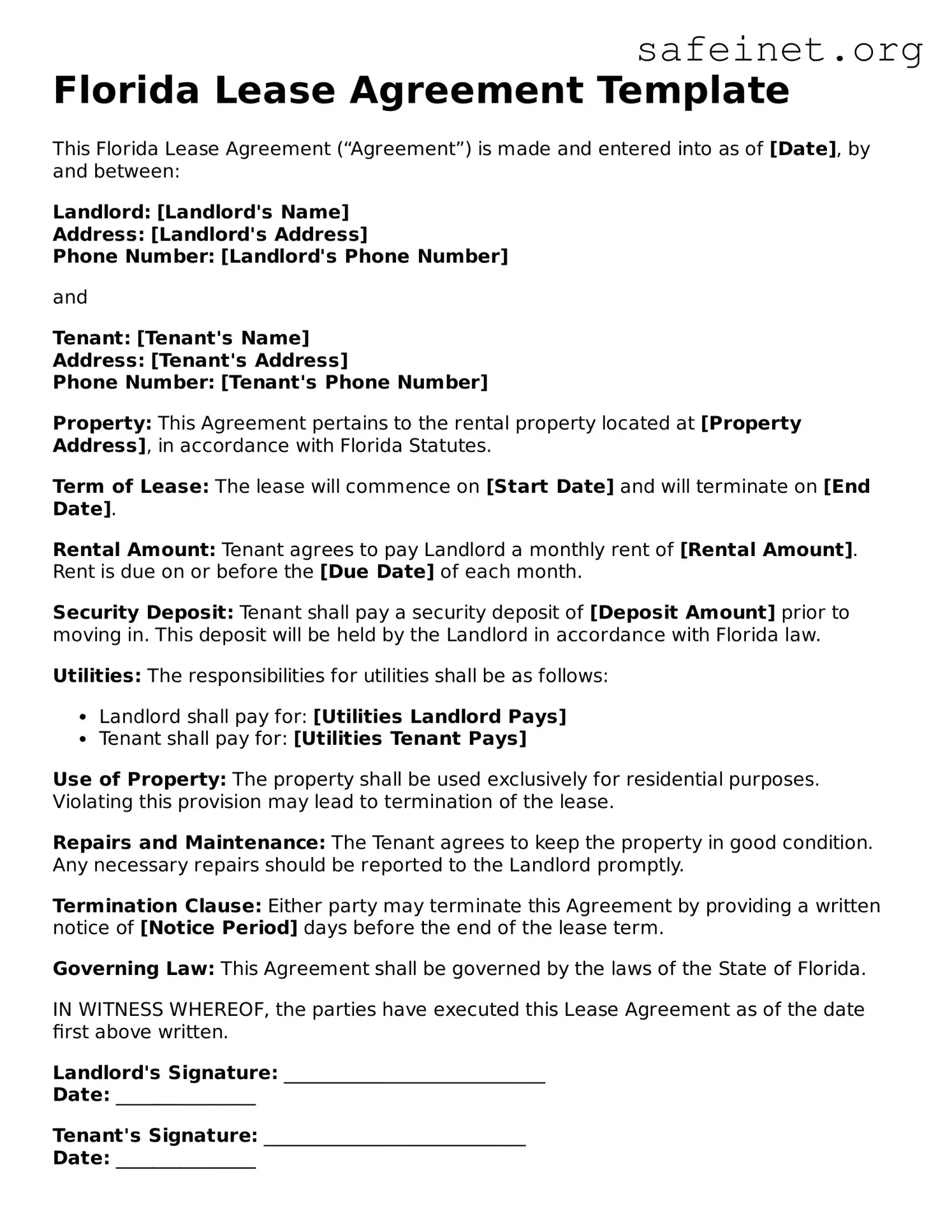Florida Lease Agreement Template
This Florida Lease Agreement (“Agreement”) is made and entered into as of [Date], by and between:
Landlord: [Landlord's Name]
Address: [Landlord's Address]
Phone Number: [Landlord's Phone Number]
and
Tenant: [Tenant's Name]
Address: [Tenant's Address]
Phone Number: [Tenant's Phone Number]
Property: This Agreement pertains to the rental property located at [Property Address], in accordance with Florida Statutes.
Term of Lease: The lease will commence on [Start Date] and will terminate on [End Date].
Rental Amount: Tenant agrees to pay Landlord a monthly rent of [Rental Amount]. Rent is due on or before the [Due Date] of each month.
Security Deposit: Tenant shall pay a security deposit of [Deposit Amount] prior to moving in. This deposit will be held by the Landlord in accordance with Florida law.
Utilities: The responsibilities for utilities shall be as follows:
- Landlord shall pay for: [Utilities Landlord Pays]
- Tenant shall pay for: [Utilities Tenant Pays]
Use of Property: The property shall be used exclusively for residential purposes. Violating this provision may lead to termination of the lease.
Repairs and Maintenance: The Tenant agrees to keep the property in good condition. Any necessary repairs should be reported to the Landlord promptly.
Termination Clause: Either party may terminate this Agreement by providing a written notice of [Notice Period] days before the end of the lease term.
Governing Law: This Agreement shall be governed by the laws of the State of Florida.
IN WITNESS WHEREOF, the parties have executed this Lease Agreement as of the date first above written.
Landlord's Signature: ____________________________
Date: _______________
Tenant's Signature: ____________________________
Date: _______________
